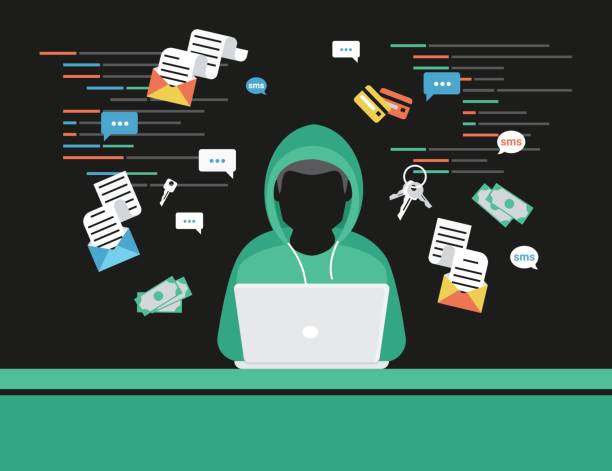Cool Facts about Cyber Attack
According to a report by Risk Based Security, there were 5,183 reported data breaches in 2019, which exposed over 7.9 billion records. This represents a 33.3% increase in the number of reported breaches compared to 2018. Small and medium-sized businesses are particularly vulnerable to cyber attacks, with 67% of small and mid-sized businesses experiencing a cyber attack in 2018, according to the Ponemon Institute.
Cyber attacks can result in significant financial losses for individuals and organizations. The average cost of a data breach in 2020 was $3.86 million, according to a report by IBM Security. This represents a 1.5% increase from the previous year. In addition, the average cost of a cyber attack for an organization in 2020 was $13 million, according to a report by Accenture.

While sophisticated cyber attacks get a lot of attention, many cyber attacks are the result of human error. For example, clicking on a phishing email or failing to apply a security patch can leave a computer or network vulnerable to attack. In fact, according to a report by Verizon, 67% of data breaches in 2019 were caused by human error.
Cyber attacks can have a wide range of impacts, from financial losses and reputational damage to physical harm and loss of life. For example, a cyber attack on a hospital or critical infrastructure could result in the loss of life or significant disruption to essential services. In addition, cyber attacks can have a significant impact on a company's reputation. According to a report by CGI, 71% of consumers say they would stop doing business with a company that experienced a data breach.
As cybersecurity measures improve, cyber attackers are becoming more sophisticated and using advanced techniques to evade detection and gain unauthorized access to systems and networks. According to a report by Symantec, 71% of all targeted attacks in 2018 were against small businesses. This suggests that cyber attackers are increasingly targeting smaller organizations, which may have weaker cybersecurity defenses.
Cyber attacks can have a global impact, as demonstrated by the 2017 WannaCry ransomware attack, which affected hundreds of thousands of computers in over 150 countries. This attack was particularly concerning because it targeted critical infrastructure, including hospitals and transportation systems. The attack highlighted the need for improved cybersecurity measures to protect critical infrastructure and other essential services.
According to a report from the Identity Theft Resource Center, there were 781 reported data breaches in the United States in 2015, which exposed over 169 million records.
In 2016, the number of reported data breaches increased to 1,093, with over 36 million records exposed, according to the same report from the Identity Theft Resource Center.
The number of reported data breaches continued to rise in 2017, with 1,579 reported breaches in the United States, according to the Identity Theft Resource Center.
In 2018, there were 1,244 reported data breaches in the United States, which exposed over 446 million records, according to a report from Risk Based Security.
According to the same report from Risk Based Security, there were 5,183 reported data breaches in 2019, which exposed over 7.9 billion records.
The COVID-19 pandemic led to an increase in cyber attacks, with many people working from home and relying on digital platforms for communication and collaboration. According to a report from Risk Based Security, there were 3,932 reported data breaches in the first half of 2020 alone, which exposed over 27 billion records.
Check Point Research has reported a 50% year-over-year increase in cyberattacks, with organizations facing an average of 925 cyberattacks per week globally. The data reveals that businesses experienced a 50% increase in weekly attacks in 2021 compared to 2020. Shockingly, approximately 30,000 websites are hacked daily on average. Every 39 seconds, a company falls prey to a cyberattack, and over 60% of global organizations have encountered at least one form of cyberattack.
The number of reported vulnerabilities is steadily increasing, as revealed in the HackerOne 2022 "Hacker-Powered Security Report". In 2022, ethical hackers identified over 65,000 vulnerabilities, a 21% increase from the previous year. Meanwhile, "The Global Risks Report 2022" from the World Economic Forum indicates that the growing sophistication of cybercriminals is making cybersecurity measures employed by businesses, governments, and individuals increasingly ineffective.
conclusion
Testimonial
Work Well Together

“We have been working with Arjun and Pritesh for more than a year now and they completely meet our expectations. We quickly found a way to effectively work together despite the time difference. They are flexible and proactive, they get to the bottom of things and deliver high quality code."
Camille
It's been a pleasure to collaborate with Rushi. Clean code, well documented, excellent communication. Looking forward to our ongoing collaboration.
George
ZenTech offers a hard working team. They understand the requirements well and follow them thoroughly. They have good knowledge of python and django and had a good contribution to my project.
EdoOur Client
















